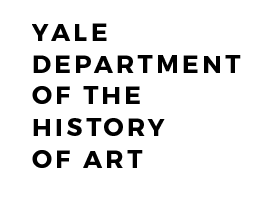Warmth, Unfreedom, and Justice

Warmth, Unfreedom, and Justice
Jennifer Van Horn draws connections between thermoception and race in the early United States
At first glance, the photograph appears to feature a simple, even rudimentary, late-18th-century tinned iron plate warmer. That it was in the home of George and Martha Washington brings added interest. But giving the object even greater significance is what it represents to enslaved servants at Mount Vernon and other of Washington’s homes — and how it reflects the power dynamic of the time.
At a recent History of Art Department talk, Prof. Jennifer Van Horn explained the thermal dynamics of heat and cold in Washington’s homes and in the quarters of the enslaved. “Warmth, Unfreedom, and Justice: Thermoception and Race in the Early United States” was presented on Oct. 9, 2024, as part of the Department’s lecture series at the Loria Center. Van Horn spoke of how enslaved people of African descent used iron objects in the households to create warmth for George Washington during and after his presidency — and how these pieces are much more than a metaphor.
Van Horn specifically discussed the plate warmer that was one of a pair that enslaved butler Frank Lee and enslaved waiters Cyrus, Austin, Christopher Sheels, and Marcus placed before the fireplaces in Washington’s dining spaces to prevent ceramic plates from chilling diners’ food.The Mount Vernon plate warmer is just one example of what the impact of Washington’s need to eradicate cold had for many of the approximately 316 individuals of African origin and descent whom he enslaved, most significantly through enslaved domestic workers’ thermal labor.
Van Horn detailed “the roles of these skilled-though-coerced thermal regulators in the service of Anglo-American comfort and the ways that their skillset intersected with African Diasporic conceptions of heat to yield potential insurgency and acts of self-emancipation.” At Mount Vernon, she said, the complex entanglements of cold, race, unfreedom, and materiality contributed to the creation of a racialized thermal order, one that enslaved persons resisted and subverted.
Van Horn centered her talk on the geopolitics of thermal comfort —of the circumstances of heat and cold and freedom and thermoception — and how they were intertwined and contested from the early formation of the United States. “The plate warmer elucidates how racialized power structures infiltrated the lived and bodily experiences of both enslaved persons and their enslavers,” said Van Horn, who holds a joint appointment as professor in the departments of Art History and History at the University of Delaware.
The thermal order, moving from a plate warmer and dining room to a stove room and a greenhouse, also corresponded to the larger political and social structure of the early United States as a whole, she said. “Under the leadership of Washington and his enslaving peers, the new republic codified enslaved people as property with a constitution that upheld enslavement and a fugitive slave law that sought to curtail Black peoples’ movement and opportunities for self-emancipation. Thermoception provides a means to begin to better understand the sensory dimensions of this racial contest for freedom in the early republic and beyond.”
Thermoception, the sense by which living organisms feel temperature, “remains understudied, even within the new wealth of scholarship on the senses,” said Van Horn who is the author of “Portraits of Resistance: Activating Art During Slavery” (Yale University Press, 2022) and “The Power of Objects in Eighteenth-Century British America” (Omohundro Institute, University of North Carolina Press, 2017).
Van Horn also co-edited a special double issue of Winterthur Portfolio entitled “Enslavement and Its Legacies” and is now co-editing the collected volume “The Disabled Gaze: Multi-Sensory Perspectives of Art, Bodies & Objects.” She is on the editorial board of the Art Bulletin and president of HECAA (Historians of Eighteenth-Century Art and Architecture).
— Frank Rizzo
